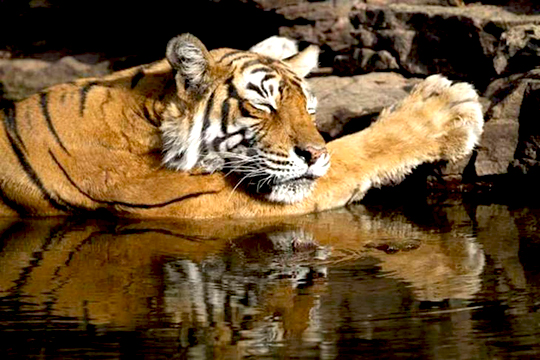Jaipur, Aug 19: India's most famous tiger, photographed by thousands of tourists over the years at a popular northern wildlife park, died on Thursday, days after the ageing animal stopped eating.
Machli had been the star attraction of Ranthambore National Park for years because of her seemingly calm nature and penchant for posing for cameras, and she even had her own Facebook page.
She had amazed viewers when her fight with a 14-foot crocodile was caught on film.
But Machli, the longest-surviving tigress in the park at the age of 20, had been slowing down in recent years and had lost her teeth. She was found starving and laying on her side this week near the park's boundary in Rajasthan state, sparking constant care by vets and park staff.
"We were trying to provide her treatment but she died. It was a natural death linked to her age," Ranthambore tiger project director Yogesh Kumar Sahu said.
Endangered Royal Bengal tigers live on average for 10 to 15 years. Her death made national headlines in India, while saddened fans took to social media to pay their respects to the "lady of the lake" and the "queen of Ranthambore".
Featured in wildlife documentaries, she was once filmed successfully battling a four-metre (14-foot) long crocodile, according to the park's website. Machli, the Hindi word for fish because of shaped markings on her face, also had 11 cubs over the years whose offspring make up almost half the park's tiger population.
Her death comes as a massive search continues for another much-loved tiger in the western state of Maharashtra who disappeared from a wildlife sanctuary in April.
India is home to more than half of the world's tiger population with some 2,226 of the animals roaming its reserves, according to the last count in 2014.






Comments
Add new comment